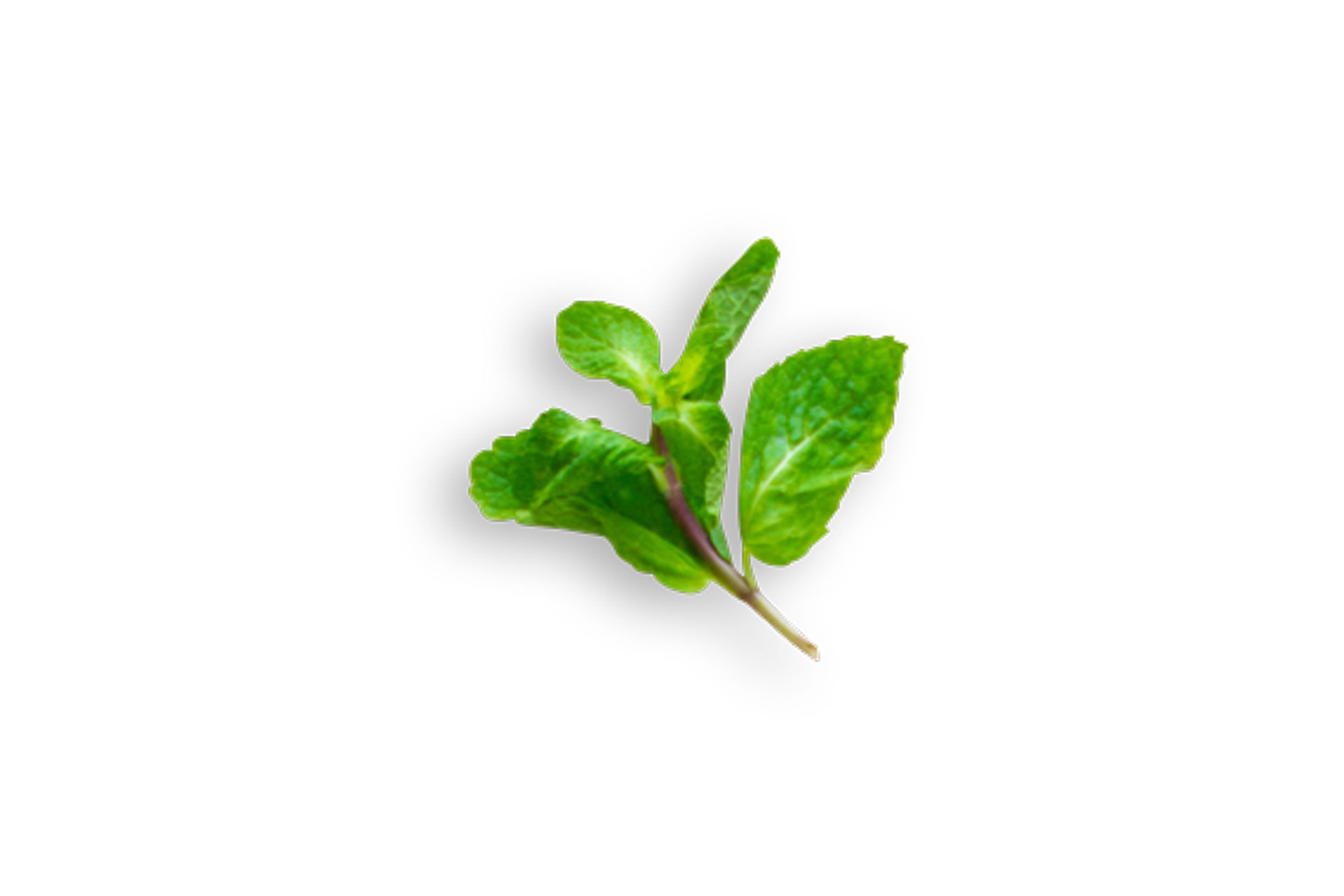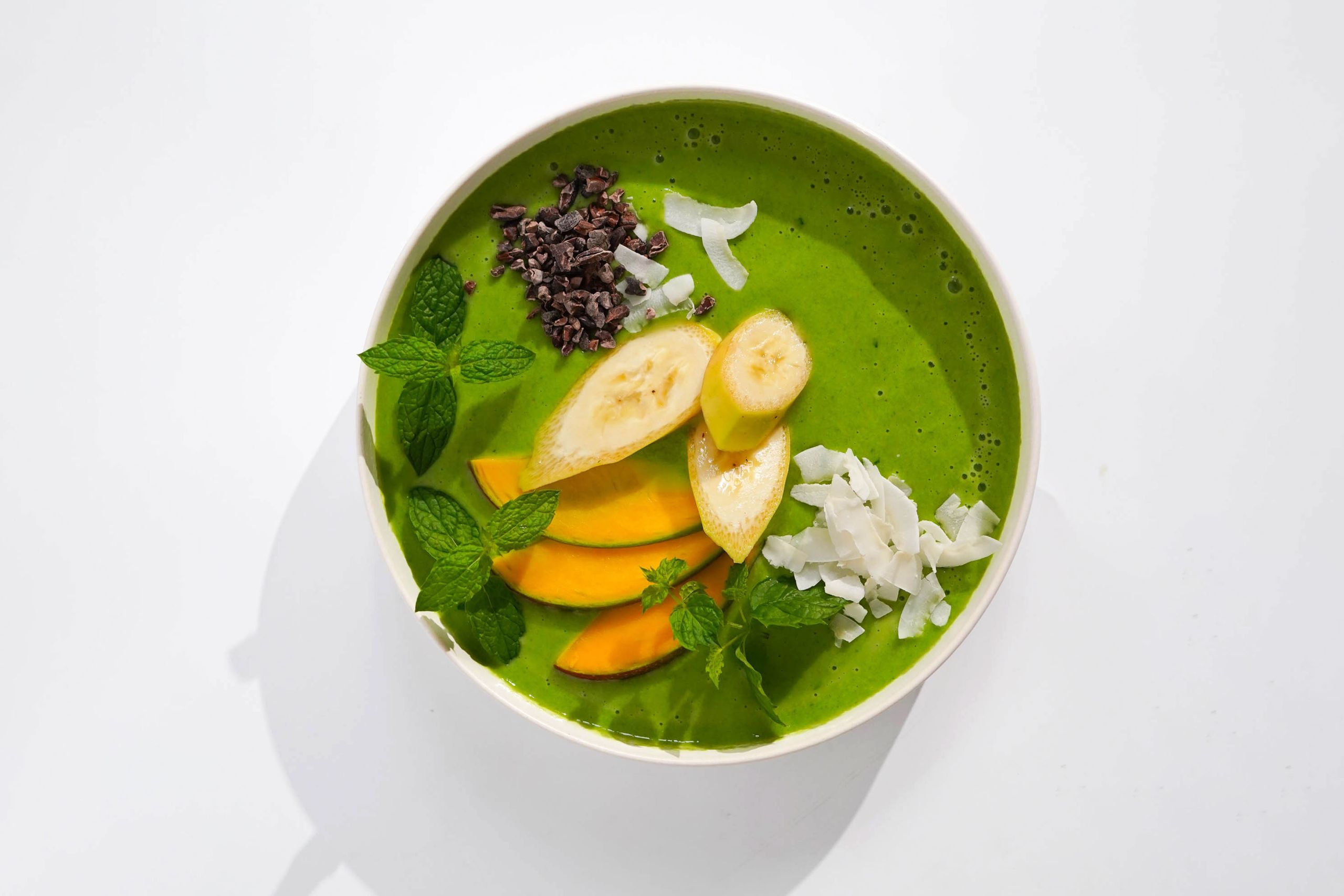Mint
Easy, breezy, minty freshness
Intro
Apple, orange and peppermint, sound familiar? The wild green leaf was popular already among ancient Romans. We know mint best from chewing gum, toothpaste and as a garnish. However, mint is one of the most versatile herbs. There are a variety of mint species that can be used in hot and cold dishes, as well as sweet, savoury or spicy. Here is the most important information about the origin, nutrition facts, varieties and preparation of mint.

What is mint?
Mint is a leaf seasoning, which is part of the Labiate family. It used to be used as a healing property in ancient Rome, as well as an aphrodisiac. It grows best near water beds.
Mint grows up to 1 m in size, and is quite bushy. Its stems are upright and crawling, with leaves that are egg shaped with serrated edges. The flowers can be white, light pink or purple.

Where does mint come from?
The British brought Mint to Europe in the 16th century, where it can be found in the Mediterranean and the Middle East.
When is mint in season?
Mint is pretty robust and can even survive winters. It requires minimal care (occasional watering and compost supply) but grows rapidly.
It should be harvested during peak summer, when its scent is most intense. Harvest is however possible between spring and autumn.
Mint – Countless varieties for different flavours
When it comes to selecting the right kind of mint, it's important to have a basic understanding of the over 20 different mint varieties and their characteristics.
Menthol
The type of flavour is determined by the menthol concentration. This yields mint varieties that are: High in menthol (peppery-spicy) Little to zero menthol but higher in Carvon (sweet, good for the digestion) Aren’t precious mints and slightly frutier.
Field Mint
This strain is often found in the form of an essential oil. It is known to ease stomach and digestion issues. It can also help activate an appetite and supports a healthy digestion. Field mint can also be soothing for cramps, and helps relax muscle and nerves. It is a common antidote for people with the flu.
Pineapple Mint
-Hairy
-Mild flavour
-Usage: tea
Apple Mint
-Flavour: mild, little menthol, with an apple aroma
-Flowers: pink
-Usage: sweet and salty. Suitable for salads, dressings, desserts, cocktails and teas
Water Mint
-Vorkommen: feuchte Umgebung wie Moore oder Ufer in Europa
-Verwendung: heilend als Tee, Öle oder auch Umschläge
Bananenminze
-Grows in damp areas like moors or water beds in Europe
-Usage: teas, oils or wrappings
Banana Mint
-Flavour: banana-esque
-Usage: bowls, smoothies, cocktails and paired with other fruit
Basil Mint
-Flavour: basil
-Usage: pizza
Eau-de-Cologne Minze
-Flavour: eau de cologne
-Usage: refreshing drinks, cocktails, teas
English Mint
-High menthol concentration
-Flavour: distinctly minty
Strawberry Mint
-Flavour: strawberry
-Usage: cold drinks and teas
Green Mint
-Flavour: intense
-Usage: chewing gum and tooth paste
Moroccan Mint
-Origin: Morocco
-Usage: teas
Mentha Spicata (Spearmint)
-Flavour: mild, slightly sweat
-Usage: chewing gum
Mojito- Mint
-Flavour: refreshing
-Usage: cocktails (Mojto)
Peppermint
-Flavour: refreshing, cooling, peppery-spicy
-Usage: for sweet and spicy food, found in gum, peppermint oil and toothpaste
Our tips for how to enjoy mint:
Mint is one of the most versatile herbs in the world. It can be used in sweet, savoury as well as spicy dishes and is used in a wide range of cuisines, from Middle Eastern, to Asian to central European.
Vegetable or fruit salads, vinegars, oils, ice cream and sorbets, cake, tea, water infusions, lemonade, herbal liquor, cocktails (Mojito, Hugo)
Mint should be consumed fairly quickly after buying it, as the menthol content sinks rapidly. If you keep it in a pot, in a semi-shady area with plenty of water, you will extend its shelf life.
Wash, dry and pluck the leaves from the stem.
Mint Nutrition Facts Per 100g:
| Typical Values | 100g |
|---|---|
| Calories | 44 |
| Fat | 0.9g |
| Carbohydrate | 15g |
| Fibre | 8g |
| Sugar | 0g |
| Protein | 3.8g |
Nutrients found in mint:
Vitamins:
Vitamin A, Vitamin B (B1, B2, B3, B9, B12), Vitamin C, Vitamin D, Vitamin E, Vitamin K and pantothenic acid
Minerals:
Chloride, Iron, Fluoride, Iodine, Potassium, Kalzium, Copper, Magnesium, Manganese, Sodium, Phosphorus, Sulphur, Selenium and Zinc

